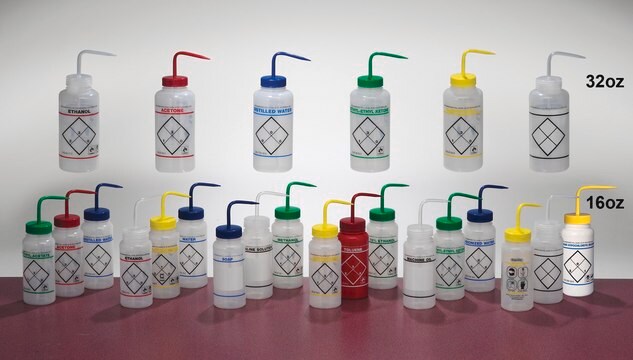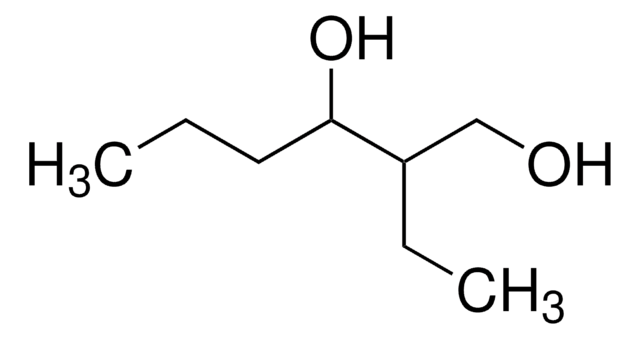Wichtige Dokumente
425044
Natriumhypochlorit -Lösung
reagent grade, available chlorine 10-15 %
About This Item
Empfohlene Produkte
Qualität
reagent grade
Qualitätsniveau
Agentur
suitable for SM 4500 - NH3
Dampfdruck
23.3 hPa ( 20 °C)
Form
liquid
Zusammensetzung
available chlorine, 10-15%
Eignung der Reaktion
reagent type: oxidant
Grünere Alternativprodukt-Eigenschaften
Safer Solvents and Auxiliaries
Learn more about the Principles of Green Chemistry.
sustainability
Greener Alternative Product
Konzentration
10-15% (chlorine by Na2S2O3, titration)
bp
111 °C
Dichte
1.206 g/mL at 25 °C
Grünere Alternativprodukt-Kategorie
Lagertemp.
2-8°C
SMILES String
[Na+].[O-]Cl
InChI
1S/ClO.Na/c1-2;/q-1;+1
InChIKey
SUKJFIGYRHOWBL-UHFFFAOYSA-N
Suchen Sie nach ähnlichen Produkten? Aufrufen Leitfaden zum Produktvergleich
Allgemeine Beschreibung
Anwendung
Towards greener solvents for the bleach oxidation of alcohols catalysed by stable N-oxy radicals
Haftungsausschluss
Signalwort
Danger
H-Sätze
Gefahreneinstufungen
Aquatic Acute 1 - Aquatic Chronic 2 - Eye Dam. 1 - Met. Corr. 1 - Skin Corr. 1B
Zusätzliche Gefahrenhinweise
Lagerklassenschlüssel
8B - Non-combustible corrosive hazardous materials
WGK
WGK 2
Flammpunkt (°F)
Not applicable
Flammpunkt (°C)
Not applicable
Analysenzertifikate (COA)
Suchen Sie nach Analysenzertifikate (COA), indem Sie die Lot-/Chargennummer des Produkts eingeben. Lot- und Chargennummern sind auf dem Produktetikett hinter den Wörtern ‘Lot’ oder ‘Batch’ (Lot oder Charge) zu finden.
Besitzen Sie dieses Produkt bereits?
In der Dokumentenbibliothek finden Sie die Dokumentation zu den Produkten, die Sie kürzlich erworben haben.
Kunden haben sich ebenfalls angesehen
Protokolle
To ensure all cell culture procedures are performed to a standard that will prevent contamination from bacteria, fungi and mycoplasma and cross contamination with other cell lines.
Unser Team von Wissenschaftlern verfügt über Erfahrung in allen Forschungsbereichen einschließlich Life Science, Materialwissenschaften, chemischer Synthese, Chromatographie, Analytik und vielen mehr..
Setzen Sie sich mit dem technischen Dienst in Verbindung.








